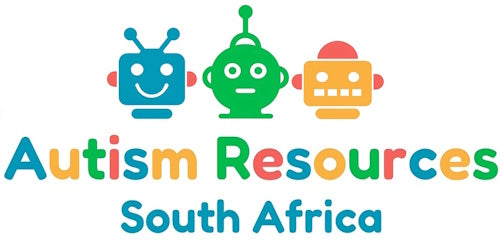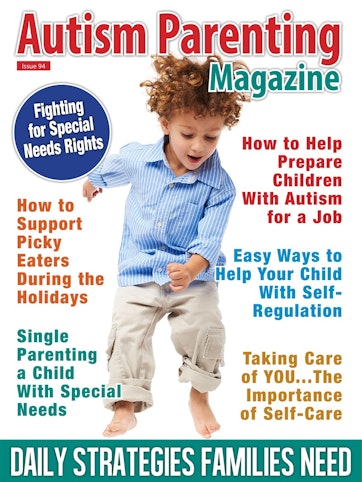Easy Ways to Help Your Child With Self-Regulation
Jaco de GoedeFrom Autism Parenting Magazine (By Ewa Omahen, PhD, February 22, 2022)
Our ability to self-regulate or exercise control over our emotions and behaviors is a critical skill that evolves as we mature and get older. The goal of self-regulation is to gain control over our emotions and behavior in order to act in our long-term best interest. It helps us get through everyday life and cope with normal as well as unexpected circumstances.
Even for the most resilient of us juggling with daily demands and coping with unexpected events and everyday stressors can be a challenge. It is often an extremely difficult ordeal for those on the autism spectrum. Neurological make-up along with sensory challenges, struggles with communication, and adaption to change, all present additional layers of difficulty in understanding emotional responses and modulating behaviors.
Does your child get easily distracted causing him/her difficulties in attending to and completing tasks? Has he/she experienced major meltdowns while waiting with you in line at a grocery store? Does your child have so much anxiety in novel situations you opt to stay in the security and familiarity of your home, choosing not to travel or attend social gatherings? These are just a few examples of the constraints resulting from our children’s difficulties with self-regulation.
The good news is the ability to regulate one’s behavior is comprised of a set of skills that can be taught and improve over time for all children, including those with autism, ADHD, or other neurological challenges. Self-regulation is the ability to manage behaviors and emotions so a person can successfully adapt to and meet the demands of any situation. Temple Grandin defines it as:
“the skill of managing feelings so that they don’t reach overwhelming levels and interfere with learning and development. Many people on the spectrum need support as they struggle to manage their emotions and mitigate their anxiety.”
Any type of therapeutic intervention typically targets self-regulation or the ability to help the recipients reach levels of equilibrium in which they can effectively regulate their own emotions and behaviors. The ultimate objective is to help the person reduce excess activation in the nervous system resulting in an inappropriate fight-or-flight response.
Executive function is the chief operating system located in a prefrontal region of the brain responsible for the cognitive processes required for goal-directed behavior. It evolves in the course of a child’s development. Common executive function processes for goal-directed behavior include working memory, task initiation, sustained attention, inhibition, flexibility, planning, organization, and problem solving. These are skills that, to a lesser or greater extent, can be taught to every individual, including children with autism.
The processes involved in self-regulation fall into three general areas:
- sensory regulation
- emotional regulation
- cognitive regulation.
Sensory Regulation
Sensory regulation allows children to maintain an appropriate level of arousal to respond effectively to sensory stimuli present across environments.
Emotional regulation
Emotional regulation enables them to respond to social rules through initiating, inhibiting, or modulating their behavior to fit within an appropriate range of emotions in any situation.
Cognitive Regulation
Cognitive regulation involves employing the mental processes required for learning and task completion to problem solve with sustained attention and persistence.
It is challenging for many children with autism to understand what they are feeling in order to manage their emotional and behavioral responses. Due to their unique neurological wiring, they tend to experience sensory overload, which can place them in a perpetual state of “fight-or-flight.” Teaching them specific skills, including the ability to identify triggers, how to become more self-aware and recognize the starting stages of sensory or emotional overload, to communicate their feelings, and to select effective coping strategies, constitute the foundations for developing effective self-regulation.
Even though it can be a long and tedious undertaking, learning these skills is critical to our children’s overall success, happiness, and quality of life. Difficulties with self-regulation manifest themselves in a variety of ways. These may include tantrums, poor attention and concentration, problems with transitions and adapting to change, impulsivity, social difficulties, under-reactivity or over-reactivity to sound, touch, or movement, and difficulties in understanding and learning new tasks.
Self-regulation is a set of skills that can improve over time with appropriate strategies targeting sensory processing, communication skills, and self-awareness. One of the most widely utilized and popular interventions for students with autism spectrum disorder is The Zones of Regulation curriculum developed by Leah Kuypers. She developed the system based on her extensive experience as an occupational therapist and autism specialist in the public school system in the United States.
Leah Kuypers learned her students’ problems with emotional and sensory regulation resulted from underlying deficits in their ability to cope with their emotions and effectively self-regulate. She realized the interventions to mitigate problematic behaviors were often ineffective as they solely targeted the behaviors and not the underlying deficits. This resulted in a Band-Aid like approach of penalizing the students for the behaviors without giving them the necessary skills to remediate the cause.
Maladaptive behavior often results from the inability to cope effectively with a stressor not manageable with one’s current capacity. The Zones of Regulation framework is based on the premise that self-regulation requires the integration of many neurologically-based skills. These include sensory processing and modulation, emotional regulation, executive functioning, language processing, pragmatic language, perspective-taking, social cognition, and central coherence. Given the complexities of the skill set required for self-regulation, utilizing an interdisciplinary approach to identify and address the underlying deficits seems optimal.
The Zones of Regulation is a framework that targets underlying deficits with the ultimate objective of improving self-regulation and social success. The techniques and zones focus on self-control, building emotional resiliency, self-management, impulse-control, and sensory regulation. Any child, with or without autism, who has difficulties with self-regulation can greatly benefit from the Zones of Regulation curriculum.
The Zones teach children self-awareness in terms of their ability to recognize when they are moving toward a less regulated state. It increases their awareness of external factors—situational triggers and internal factors—physiological states, levels of arousal, and emotions. It helps them understand how their behaviors influence outcomes, including the perceptions of others.
The Zones framework uses a systematic cognitive behavioral approach to teach self-regulation by utilizing four concrete zones to describe the feelings and states of alertness a child is experiencing.
The Red Zone describes extremely heightened states of alertness and intense emotions, including anger, rage, intense sadness, and terror. These are the emotions associated with a fight-or-flight response.
The Yellow Zone describes elevated emotions and heightened emotional states but excludes the intense emotional experiences of the Red Zone. These emotions can be negative or positive, including anxiety, stress, nervousness, excitement, and restlessness.
In the Green Zone, a person feels calm and alert. Common emotional states include happiness, contentment, calmness, and readiness to learn.
The Blue Zone describes low states of alertness. Typical emotions experienced in this state include sadness, boredom, and exhaustion. A person may feel tired or depressed while in this zone.
The zones are analogous to traffic signs, with the green zone associated with being safe and ready to proceed, the yellow zone indicating caution, the red zone representing an emergency that requires an immediate response, and the blue zone compared to a rest area someone comes across on long road trip. Teaching a child to identify and label internal states and emotions in himself/herself and others and to communicate it requires explicit methods. The children must learn how various states and emotions look and feel. Different tools utilized to teach self-awareness and recognize internal states and feelings include labeling emotions in video clips or pictures representing different emotions. Role-playing, social stories, and modeling in the moment are additional useful tools.
It is important for parents and caregivers to model appropriate behaviors and “walk” the children though emotions as they experience them, including labeling the emotion, helping to identify its triggers, and experimenting with and utilizing effective coping skills. For example, a parent may say the following: “I feel upset when I am stuck in traffic. I can take ten deep breaths. It will help me relax,” or “You look tired after working on the math assignment. Do you need to take a break?”
Helping children identify triggers for their various emotions can better prepare them for unavoidable daily stressors and teach them when to exercise caution. Parents and caregivers can help them explore, experiment with, and identify helpful coping strategies and tools to assist in regulating their emotions and behaviors.
Different children may require and respond differently to the various coping skills or Zones Tools Menu including any of the following: breathing strategies, listening to music, jumping jacks, taking a break in a calming spot, using a variety of sensory fidgets, identifying the size of the problem, taking a walk, drinking water, or different sensory activities. Utilizing visual supports that include a list of potential triggers, a feelings chart, and an effective coping tools menu can be very helpful in providing the scaffolds necessary to learn self-regulation.
Additional suggestions to assist your child with gaining a sense of control and developing self-regulation include the following:
- Model appropriate behavior and coping skills yourself: label your feelings and explain how you are going to handle those feelings.
- Communicate your expectations clearly and in a calm manner.
- Show empathy by acknowledging your child’s feelings and letting him/her know everyone feels angry, sad, or disappointed at times.
- Practice calming activities by experimenting and learning what works best for your child, including any of the following: proprioceptive activities, vestibular activities, deep pressure, deep muscle work, oral, and tactile activities.
- Prepare a special calming place that offers comfort and may include cushions, blankets, stuffed animals, a rocking chair, a yoga ball, or sensory items. Teach your child to use that place whenever he/she is feeling upset, overwhelmed, or just needs to take a break.
- Help the child to express his/her feelings using words or visuals.
- Provide a visual schedule for the day.
- Prepare your child for transitions by providing verbal/visual reminders and utilizing visual timers: “You have five minutes left to play on the computer.”
- Utilize First–Then schedules: “First put your toys away, then you can watch the movie.”
- Prepare your child for unexpected changes in routine in advance whenever possible.
The ultimate goal of self-regulation is to help our children feel in control. Self-regulation may look different for every child, but every child with or without the neurological challenges associated with autism can benefit immensely from learning the skills required for emotional and behavioral self-regulation.
The ability to regulate one’s emotions and behavior is key to building and maintaining healthy interpersonal relationships, learning, attaining greater personal independence, self-determination, and an overall state of well-being. Teaching our children the art of self-regulation is one of the most valuable steps in preparing them for their future and in ensuring a better quality of life and overall happiness.
Additional Resources:
- The Zones Of Regulation: A Concept to Foster Self-Regulation & Emotional Control created by Leah Kuypers, MA Ed., OTR/L — com/index.html
- Understanding the Zones of Regulation and How to Use Each — https://maxbrainfunction.com/zones-of-regulation/
- Self-Regulation – Kid Sense Child Development — https://childdevelopment.com.au/areas-of-concern/sensory-processing/self-regulation/
- How to Improve Emotional Self-Regulation Among Children with Autism and Attention Disorders — https://onlinepsych.pepperdine.edu/blog/emotional-self-regulation-children-autism/
- 7 Facts About Autism and Emotional Regulation — https://firstpathautism.com/7-facts-autism-emotional-regulation/
This article was featured in Issue 94 – Daily Strategies Families Need



